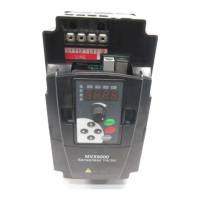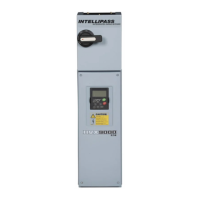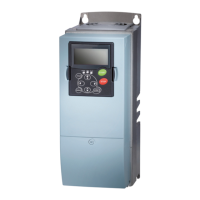Serial interface (Modbus RTU)
04/10 MN04020001Z-EN
138
Structure of the master request
Address:
• The address (1 to 255) of the frequency inverter to be sent the
request is entered in parameter S2.3. Only the frequency
inverter with this address can respond to the request.
• Address 0 is used as a so-called Broadcast (message to all
slaves) from the master. In this mode, individual slaves cannot
be addressed and data cannot be output from the slaves.
Function code:
The function code defines the type of message. The following
operations can be executed on the M-Max
TM
:
Data:
The length of the data block (Data: N x 1 Byte) depends on the
function code. This consists of two hexadecimal character sets
between 00 and FF. The data block contains additional
information for the slave in order to carry out the operation
defined by the master in the function code. Example: number of
parameters to be processed.
CRC:
The telegrams in the Modbus RTU have a CRC (Cyclical
Redundancy Check). This CRC field consists of two bytes that
contain a binary 16 bit value. The CRC check is always run
independently of the parity check for the individual characters of
the telegram. The CRC result is attached to the end of the telegram
by the master. The slave recalculates while receiving the telegram
and compares the calculated value with the actual value in the
CRC field. If both values are not identical, an error is set.
Structure of the slave response
Required transfer time:
• The time between receiving a request from the master and the
response of the frequency inverter is at least 3.5 characters (rest
time).
• Once the master has received a response from the frequency
inverter, it must wait for at least the rest time before it can send
a new request.
Normal slave response:
• If the master request contains a write register function (function
code 06 or 16), the frequency inverter immediately returns the
request as a response.
• If the master request contains a read register function (function
code 03 or 04), the frequency inverter returns the read data
with the slave address and the function code as a response.
Slave response in the event of an error:
If a request contains an error (e.g. incorrect data address or
incorrect data value) other than a transfer error, the frequency
inverter returns an exception message without executing
anything. You can evaluate the exception message.
Function code
[hex]
Designation Description
03 Read Holding Registers Reading of the holding registers in the slave (process data, parameters, configuration).
A master request enables up to 11 registers to be read.
04 Read Input Registers Reading of the input registers in the slave (process data, parameters, configuration).
A master request enables up to 11 registers to be read.
06
Write Single Register Writing of a holding register in the slave.
With a general telegram (Broadcast) the appropriate holding registers are written in all slaves. The
register is read back for comparison.
10 Write Multiple Register Writing of several holding registers in the slave.
With a general telegram (Broadcast) the appropriate holding registers are written in all slaves.
A master request enables up to 11 registers to be read.

